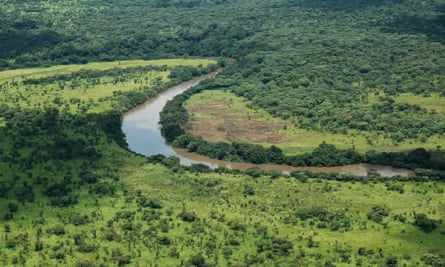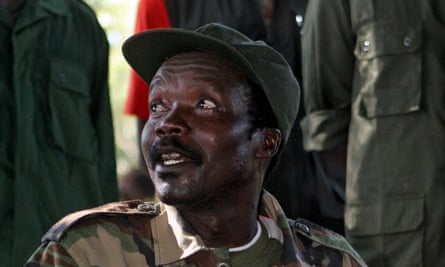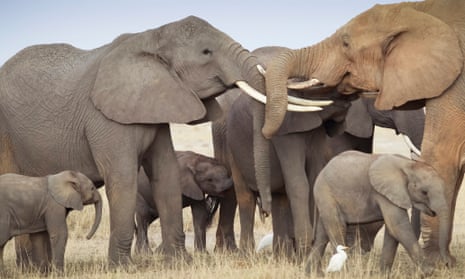Warlords of Ivory shows the results of a year-long investigation by National Geographic reporter Bryan Christy. It documents atrocities committed against people and wildlife, on an almost unimaginable scale, by an ivory trafficking network coordinated by two of Africa’s most notorious war criminals.
Produced by WildlifeDirect (International) Chairman John Heminway and directed by JJ Kelley, the documentary will be screened on the National Geographic Channel on Sunday 30 August.
Christy’s investigation demonstrates without doubt what many people have long believed: ivory trafficking funds the activities of terrorist groups in Africa. But the degree and scale of the depravity revealed by the film is truly shocking, even to hardened observers like myself.
Christy passed a fake elephant tusk containing a hidden GPS tracking system on to trafficking gangs based in the Central African Republic. He was then able to track the route taken by the “ivory”: north to the headquarters of the Lord’s Resistance Army (LRA), led by psychopath and mass murderer Joseph Kony, and from there further north to Sudan.
In interviews with people along the route, Christy documents the heart-rending suffering of people and wildlife at the hands of the LRA. An LRA deserter describes how one armed detachment of the group was tasked with killing people, another with killing elephants.
The deserter shows little outward emotion, but is clearly traumatised by the experience. The LRA ‘army’ is made up of children and young men who are kidnapped and forced to commit unspeakable acts of violence, or suffer the same fate themselves
In one particularly chilling section of the film, Christy is shown evidence of the militarized slaughter of elephants in the Garamba National Park, in the north-east of the Democratic Republic of Congo. He sees elephants that have been shot in the head from above, suggesting that the poachers arrived by helicopter. The tusks have been removed using chainsaws.
This is elephant poaching on an industrial scale. The national park lost more than 10% of its elephant population last year and dozens of wildlife rangers have died in firefights with the heavily armed poachers.

The tusks are transported on foot, carried by LRA conscripts through hundreds of miles of almost impenetrable jungle to Joseph Kony’s camp in a disputed area of the border of Sudan and South Sudan. From there the ivory is passed on to soldiers of the Sudanese army, in exchange for money or weapons.
These soldiers are under the control of Sudanese President Omar al-Bashir, the only sitting head of state to have been indicted by the International Criminal Court (ICC), on charges of genocide, war crimes, and crimes against humanity. Al-Bashir is accused of responsibility for the deaths of more than 300,000 men, women and children in Dafur.
Whilst the activities of the LRA have declined from their peak in the early years of the century, the fear must be that ivory trafficking is being used to restock its arsenals in preparation for a new orgy of bloodshed in the region. According to Christy, there is also evidence suggesting that trade in ivory is one of the means being used to forge links among the LRA, Al Shabaab, ISIS and other terrorist groups.

Christy’s investigation was unable to uncover what happens to the ivory once it reaches Sudan and how it reaches its final destination, presumably the consumer market in China and other Southeast Asian countries. But Sudan has close links with China. In his article for National Geographic magazine, Christy notes that:
Sudan is the recipient of substantial Chinese infrastructure investment, which typically comes with Chinese workers, a source of ivory smuggling in many parts of Africa. Ivory shops in Khartoum advertise in English and Chinese as well as Arabic.
This week, al-Bashir will be the guest of the Chinese government. Following a short “bilateral visit”, this war criminal will attend celebrations in Beijing to mark the 70th anniversary of the end of World War II. It would be interesting to know the contents of the hold of the presidential jet.
This magnificent documentary provides compelling evidence of the extent to which poaching is contributing to the terrorist threat that is crippling many parts of Africa. From my perspective, it highlights three policy changes urgently needed to defeat the traffickers:
Save elephants by funding effective organisations on the ground
Existing international agreements and agencies charged with combating wildlife crime are not fit for purpose. Why was it left to an investigative journalist to uncover this crucial evidence? And if he was able to do so (in the end he only had to talk to people), how did it escape the notice of international agencies such as CITES and Interpol for so long, given their vastly greater human, technological and financial resources?
Huge sums of money are channelled into international conferences and cooperation agreements that often seem little more than talking shops. At present very little support reaches the people on the ground who risk their lives to defend wildlife, like the heroic rangers of Garamba NP, two of whom were killed by poachers while Christy’s film was being made.
Political leaders regularly announce—often in a glare of publicity—that more money will be given to combat wildlife crime. I do not doubt their sincerity. But new structures are needed to enable the funds to be used effectively.
Prosecute ivory traffickers in international courts
At present Africa is a safe place for the ivory cartels to do business. Domestic courts across Africa are failing to punish the perpetrators of transnational wildlife crimes. To deter transnational ivory traffickers we need to raise the stakes. Wildlife crime should be officially classified as a serious international crime, on a par with others such as drug smuggling and people smuggling.
In the future, I am sure that desecration of the environment will be viewed as a crime in its own right. People will look back at the destruction of the natural environment that took place in the second half of the 20th century with the same horror and disbelief as we now view the wars and genocide that took place in the first half.
For the time being, humans and human survival are still at the centre of international law. But Christy’s investigation demonstrates how ivory poaching and trafficking are intimately bound up with human rights abuses considered crimes against humanity under existing international law.
The same kidnapped children that are forced by LRA to maim and kill their compatriots are made to butcher elephants and carry their tusks through the jungle, tusks that will finance a new round of kidnapping and more carnage. This is justification enough for including crimes against wildlife in the already long list of ICC indictments against Kony and al-Bashir.
Ban ivory trade in perpetuity
It’s time to shut down all trade in ivory, including the legal trade that provides cover for the trafficking.
Do the wealthy fashionistas in China, Thailand, Europe and USA who buy ivory know that their purchases are funding atrocities committed against children in Africa? Even money given in good faith for a supposedly ‘legal’ product, may well contribute directly or indirectly to the growth of terrorism, murder, rape and the forcible transformation of innocent children into murderers.
But terrorists would have no interest in ivory if it wasn’t so valuable. The huge rise in the price of ivory that makes it a profitable commodity for terrorists came after the calamitous decision by CITES in 2008 to sanction the sale of ivory stockpiles, thereby re-opening the global market that had been closed down since 1989.
There may always be a market for illicit ivory, but if ordinary people openly reject it, the price will collapse and the economic incentive for poaching will be vastly reduced. It happened when CITES banned the international trade in ivory in 1989 and it can be done again.

Comments (…)
Sign in or create your Guardian account to join the discussion